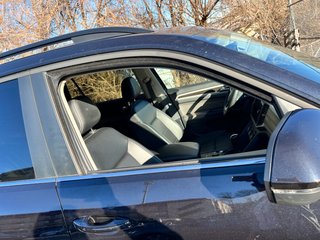The automotive glass industry, particularly in regions like Sanford, North Carolina, faces a pressing challenge. As the demand for high-quality automotive windows continues to rise, manufacturers must grapple with two divergent paths: traditional practices rooted in established methods and sustainable approaches designed to minimize environmental impact. Understanding the implications of these choices is essential not just for manufacturers but also for consumers who increasingly prioritize sustainability.
Traditional Manufacturing Practices
Traditional manufacturing methods have long been the backbone of the automotive glass sector. These processes typically involve a series of steps that have been refined over decades, emphasizing efficiency and cost-effectiveness. Glass is produced using silica sand, soda ash, and limestone, which are melted at high temperatures to create molten glass. This molten material is then shaped and treated to meet specific safety standards.
However, this conventional approach comes with significant environmental costs. The extraction of raw materials can lead to habitat destruction and biodiversity loss. For example, mining silica sand often disrupts local ecosystems and alters landscapes permanently. Furthermore, the energy-intensive nature of traditional glass production contributes heavily to greenhouse gas emissions. Factories consume vast amounts of fossil fuels to reach the necessary temperatures for melting glass, leading to carbon emissions that contribute to climate change.
In addition to the direct environmental impacts associated with resource extraction and energy consumption, traditional manufacturing processes often generate considerable waste. Broken glass during production or defective products ultimately end up in landfills if not salvaged efficiently. While some manufacturers implement recycling initiatives, many do not prioritize waste reduction strategies effectively.
The Shift Toward Sustainability
Recognizing these shortcomings, the automotive glass industry is beginning to embrace sustainable practices that aim to mitigate environmental damage while maintaining product quality. This shift involves rethinking not only how glass is manufactured but also how it is sourced and recycled.
Sustainable approaches start with the selection of raw materials. Manufacturers are increasingly looking into sourcing silica from more responsible suppliers who adhere to environmentally friendly mining practices. Additionally, innovations in alternative materials are being explored; some companies are experimenting with bio-based materials that could replace traditional ingredients without sacrificing quality.
Energy efficiency plays a pivotal role in sustainable manufacturing as well. Many modern facilities are investing in renewable energy sources such as solar or wind power to run their operations. By tapping into these clean energy options, manufacturers can significantly reduce their carbon footprint during production processes.
Recycling also stands at the forefront of sustainable practices in automotive glass manufacturing. Instead of discarding defective products or scrap glass from production lines, many companies have established robust recycling programs that allow them to reuse materials effectively. This not only reduces waste but also decreases the need for new raw materials, further lessening environmental impact.
Comparing Environmental Footprints
When evaluating the environmental footprints of traditional versus sustainable manufacturing practices in automotive window production, concrete differences emerge.
Traditional methods typically result in higher levels of carbon emissions due to reliance on fossil fuels for energy needs as well as inefficient resource management throughout production stages. Estimates indicate that conventional glass production emits approximately 1 ton of CO2 per ton of glass produced—a substantial figure when considering global production scales.
In contrast, facilities adopting sustainable practices have reported reductions in emissions by up to 50 percent through comprehensive energy audits and investments in cleaner technologies. Furthermore, these facilities often achieve significant water savings through advanced recycling systems that reclaim water used during various stages of production.
While transitioning towards sustainability may require initial capital investment and overhaul of existing systems, the long-term benefits—both environmentally and economically—are becoming increasingly apparent.
Quality Considerations
One might assume that prioritizing sustainability could compromise product quality; however, this isn’t necessarily true within the automotive glass sector today. Advances in technology mean that high-quality standards can be maintained regardless of whether a manufacturer chooses traditional or sustainable practices.
For instance, tempered glass—widely used for windshields—can still be produced effectively using recycled materials without sacrificing clarity or strength. In fact, some studies suggest that utilizing recycled content can enhance certain properties due to better molecular alignment achieved during processing techniques unique to recycled materials.
Moreover, consumer demand for transparency around sourcing methods means brands focusing on sustainability may find themselves at a competitive advantage in an ever-increasingly eco-conscious market.
Real-World Applications: Sanford’s Local Scene
In Sanford NC—a city known for its vibrant auto repair community—the local auto glass businesses are beginning to reflect these larger trends within the industry landscape at large. Companies specializing in windshield replacement or mobile auto glass repair are now exploring how they can implement more eco-friendly measures without compromising service quality or client satisfaction.
Local shops may start sourcing their products from manufacturers who prioritize sustainability while simultaneously promoting those efforts through marketing channels aimed at environmentally conscious consumers seeking windshield crack repair services or complete replacements using greener alternatives.
By supporting businesses committed to sustainable choices like sourcing from responsible suppliers or utilizing eco-efficient installation methods throughout their operations—from mobile services right down into storefront installations—Sanford residents can actively participate in mitigating negative impacts on our planet while enjoying high-quality automotive windows tailored precisely for their needs.
The Road Ahead
As technology advances further into areas such as automation within windshield crack repair sanford nc factories alongside improved data analytics capabilities allowing real-time monitoring across supply chains—the potential exists for even greater strides toward sustainability within automotive window production processes over time ahead remains promising indeed!
Investment incentives aimed at encouraging manufacturers’ adoption rates surrounding green technologies must continue growing so we witness more widespread transformations occurring across this vital sector which directly influences our daily lives every single day driving down roads behind crystal-clear windshields!
Ultimately it becomes clear: choosing between traditional versus sustainable approaches isn’t merely about prioritizing profits anymore; it’s about recognizing our shared responsibility toward protecting Earth’s environment while maintaining uncompromised standards expected by customers everywhere—even right here close home base like Sanford where small changes compound cumulatively generating profound positive effects moving forward!
